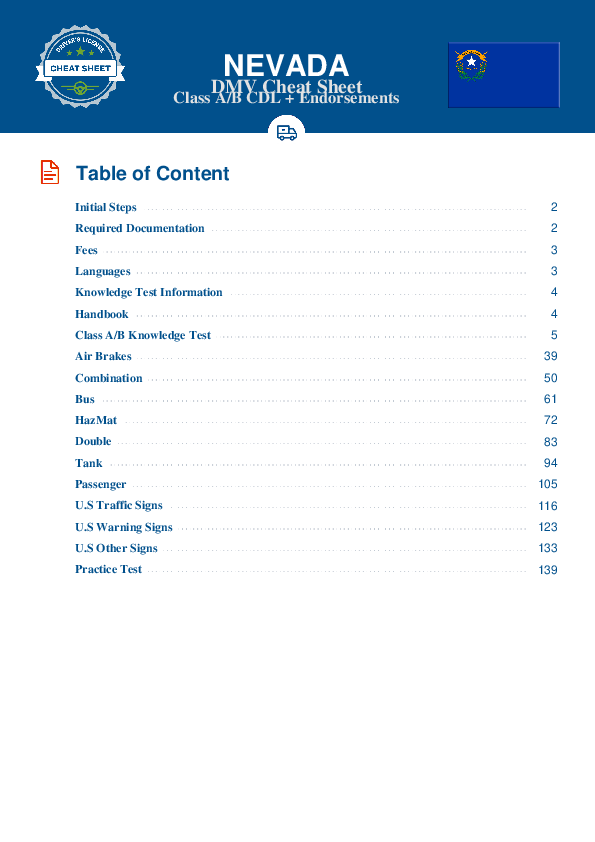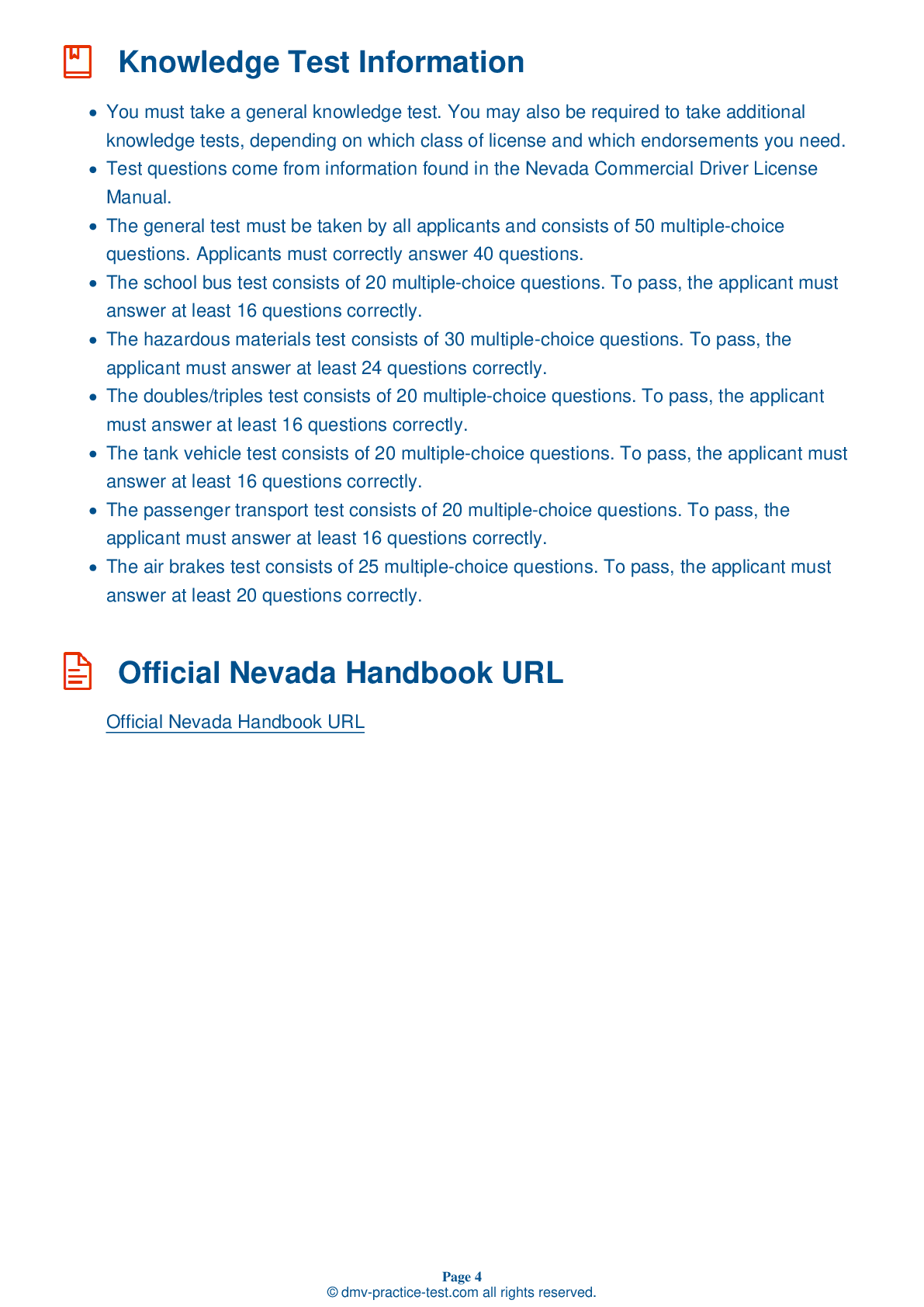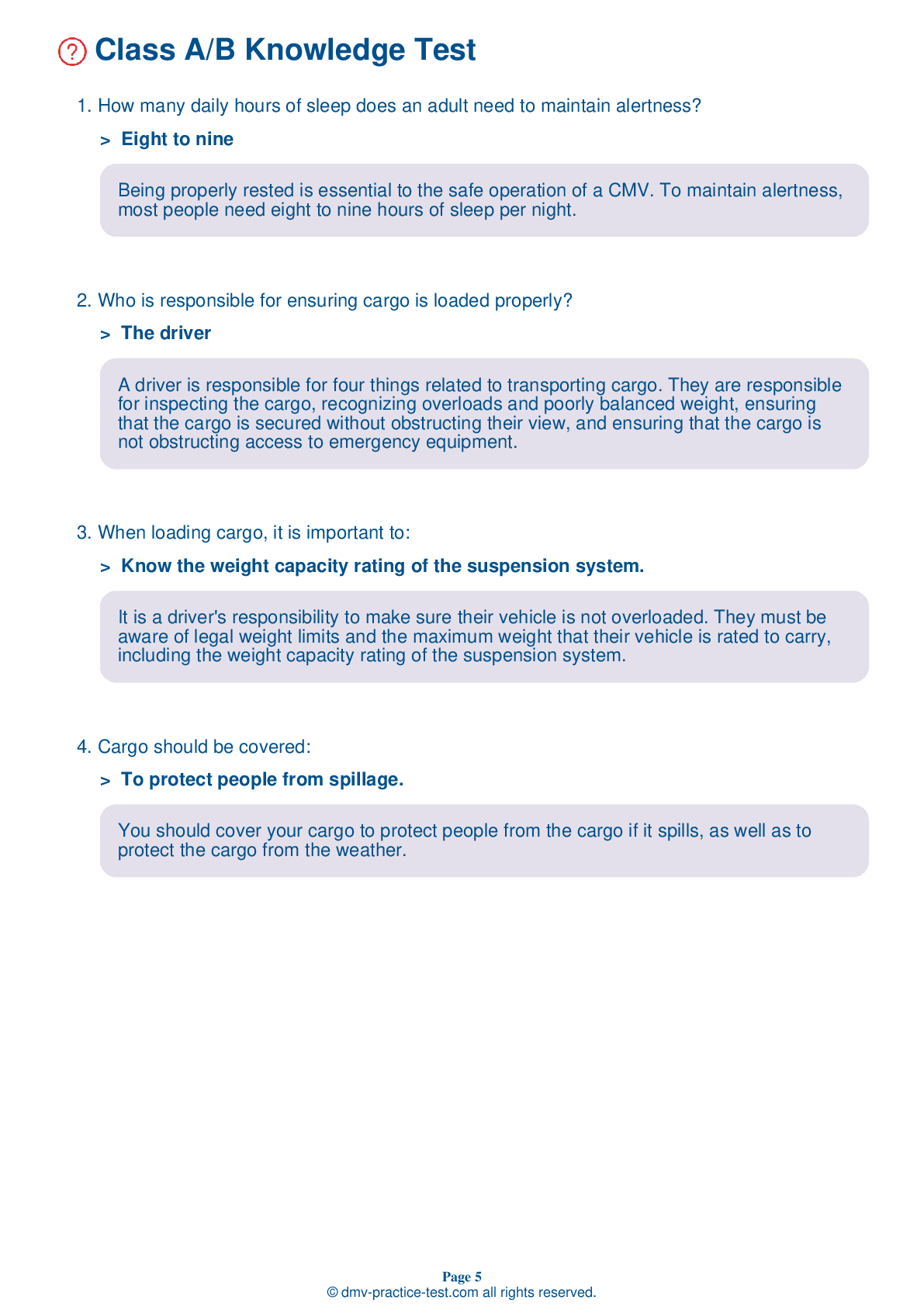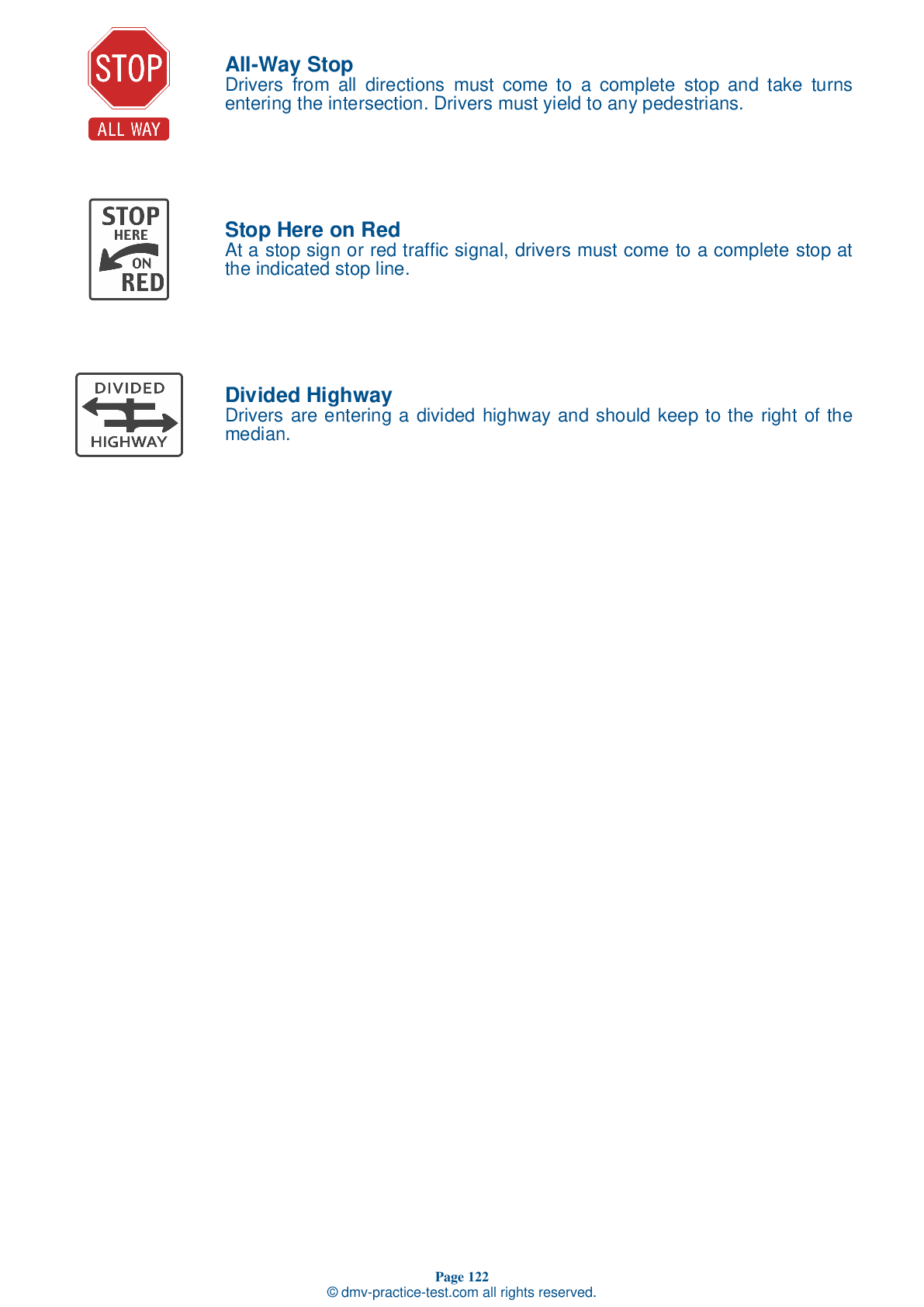Air Brakes #1
Air Brakes Endorsement Test | Nevada 2025 #1 Page 4 of 4
Train for FREE online with our Nevada CDL air brake test. The official exam test consists of several obligatory parts, with all of them checking your knowledge of different blocks of road rules. If you need to obtain a NV Class A/Class B driver license in 2025, practice as much as possible. Free sample tests published on our website will help you check and improve your knowledge and boost your grades. Please bear in mind that the requirements for CDL may vary from state to state.
25
20
20
19 . A low air pressure warning signal should activate:
In an air brake system, a low air pressure warning signal must come on if air pressure in the tanks falls below 55 psi. This warning signal may come in the form of a light, a buzzer, or a wig wag.
20 . To ensure normal stopping power, drivers of vehicles equipped with a front brake limiting valve should:
Some older vehicles have front brake limiting valves with "normal" and "slippery" settings. Setting a brake limiting valve to "slippery" reduces the vehicle's stopping power, so a driver should make sure the valve is in its "normal" position. Front wheel braking has proven to be effective in all driving conditions.
21 . When traveling down a steep downgrade:
The vehicle should be driven on the shoulder.
On a downgrade, the braking effect of the engine should be your primary method of controlling speed. Shift down to a lower gear before starting down the hill and save the brakes for additional slowing or stopping that may be required by road or traffic conditions.
22 . To make a stop in a vehicle equipped with air brakes, the driver should:
To make a normal stop in a vehicle that is equipped with air brakes, you should simply press the brake pedal down.
23 . What should happen before the air pressure in an air brake system tank falls below 55 psi?
The low air pressure warning signal must activate before the air supply pressure drops below 55 psi in the air tank. If the warning signal does not turn on when being tested during an inspection, the vehicle is not safe to drive.
24 . Air pressure should build up in a single air system within:
One minute.



